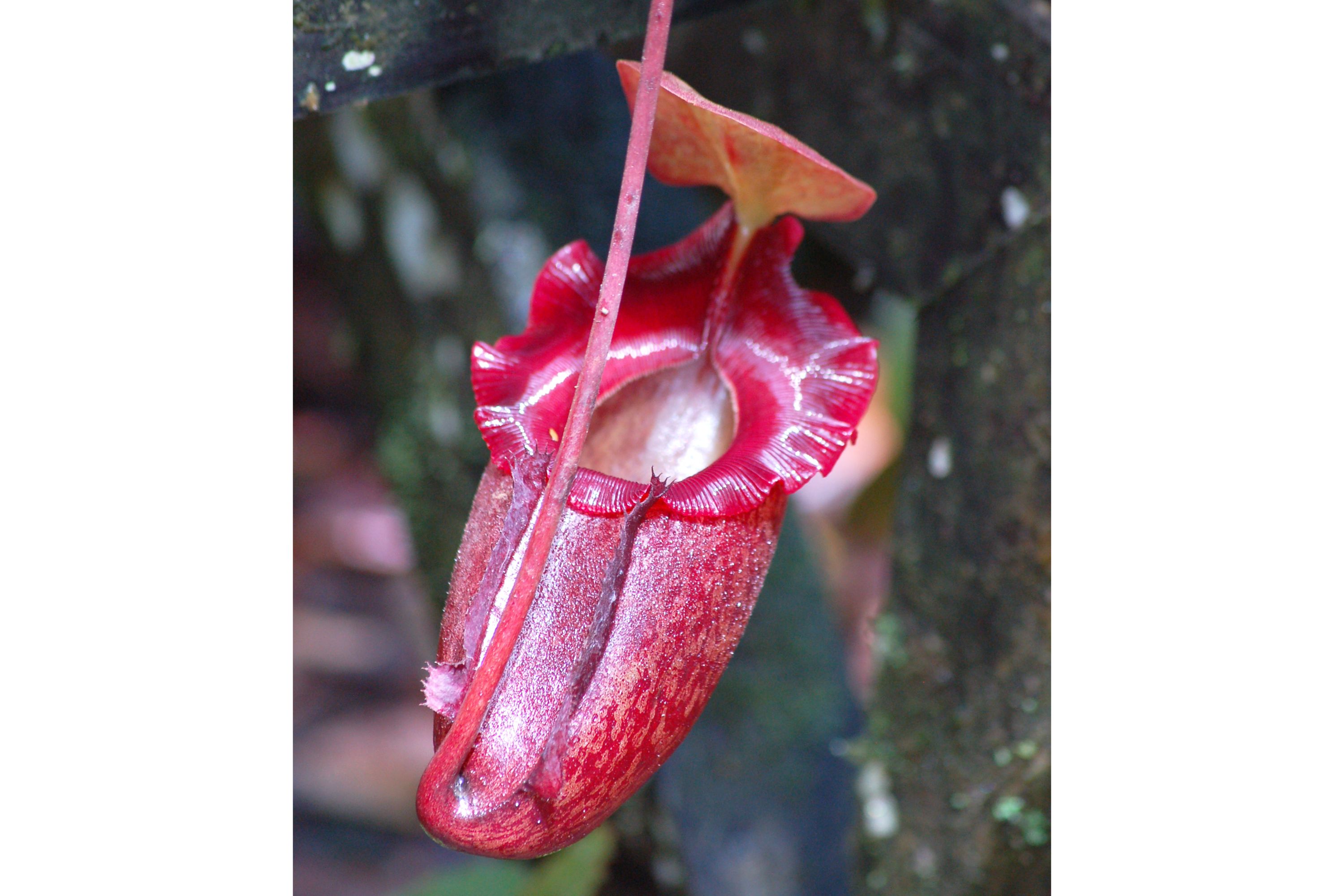Pitcher plant
(Nepenthes rajah)

Description
Nepenthes rajah is a carnivorous pitcher plant species of the family Nepenthaceae. It is endemic to Mount Kinabalu and neighbouring Mount Tambuyukon in Sabah, Malaysian Borneo. Nepenthes rajah grows exclusively on serpentine substrates, particularly in areas of seeping ground water where the soil is loose and permanently moist. The species has an altitudinal range of 1,500–2,650 metres (4,920–8,690 ft) a.s.l. and is thus considered a highland or sub-alpine plant. Due to its localised distribution, N. rajah is classified as an endangered species by the IUCN and listed on CITES Appendix I. The species was collected by Hugh Low on Mount Kinabalu in 1858, and described the next year by Joseph Dalton Hooker, who named it after James Brooke, the first White Rajah of Sarawak. Hooker called it "one of the most striking vegetable productions hither-to discovered". Since being introduced into cultivation in 1881, Nepenthes rajah has always been a much sought-after species. For a long time, the plant was seldom seen in private collections due to its rarity, price, and specialised growing requirements. However, recent advances in tissue culture technology have resulted in prices falling dramatically, and N. rajah is now relatively widespread in cultivation. Nepenthes rajah is most famous for the giant urn-shaped traps it produces, which can grow up to 41 cm high and 20 cm wide. These are capable of holding 3.5 litres of water and in excess of 2.5 litres of digestive fluid, making them probably the largest in the genus by volume. Another morphological feature of N. rajah is the peltate leaf attachment of the lamina and tendril, which is present in only a few other species. Nepenthes rajah traps vertebrates and even small mammals, with drowned rats having been observed in the pitcher-shaped traps. It is one of only three Nepenthes species documented as having caught mammalian prey in the wild, the others being N. rafflesiana and N. attenboroughii. N. rajah is also known to occasionally trap small vertebrates such as frogs, lizards and even birds, although these cases probably involve sick animals and certainly do not represent the norm. Insects, and particularly ants, comprise the staple prey in both aerial and terrestrial pitchers.
Taxonomic tree:







